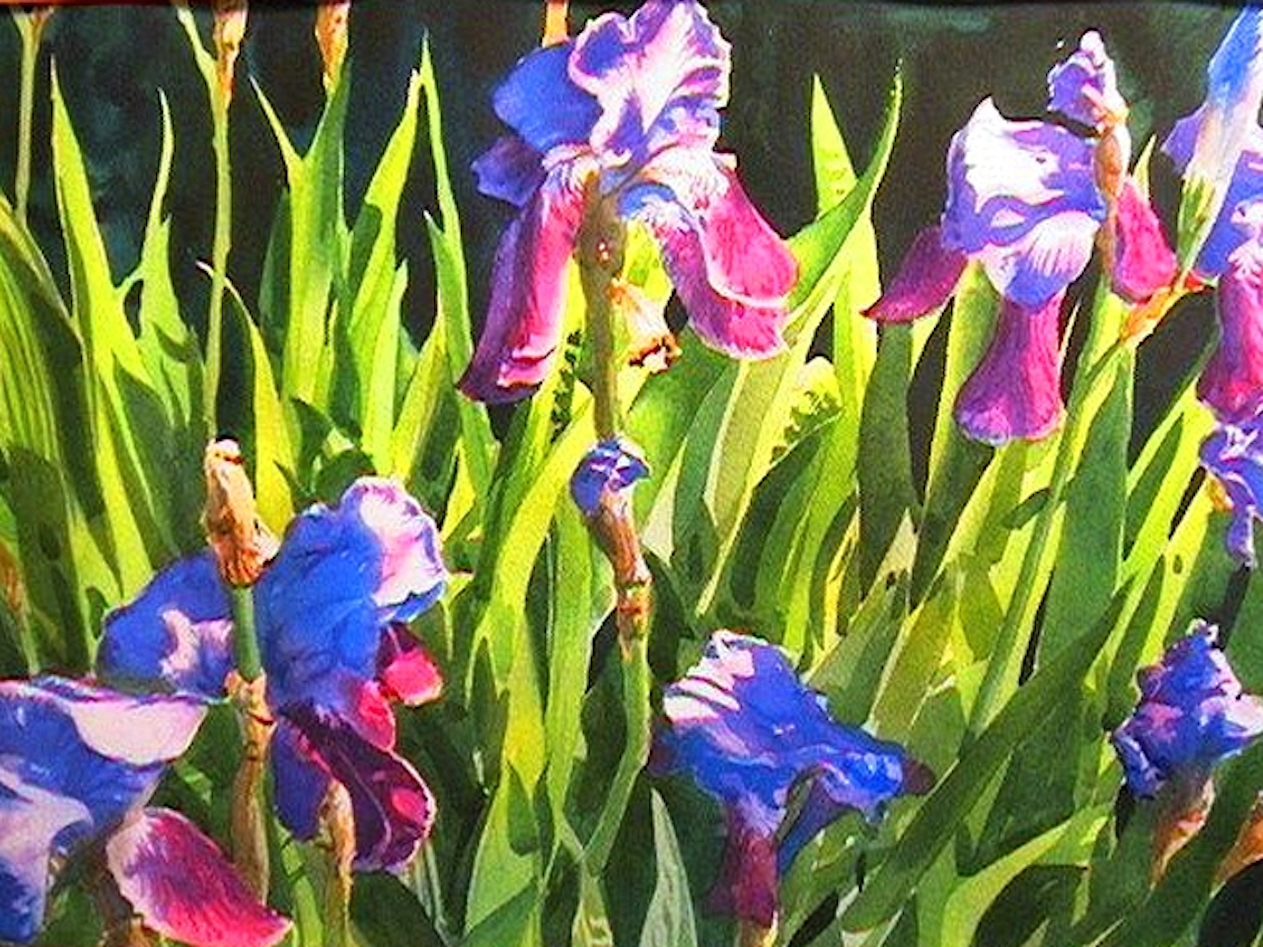Some rather gaudy purple irises serve as willing subjects for working wet-in-wet and glazing for bright and colorful results.
Materials used:
Brushes
- 1 1/2" (381mm) Flat Winsor & Newton Series 965
- 1" Grumbacher Aquarelle Flat Red Sable
- #12 Winsor & Newton Series 7 Red Sable
- #10 Winsor & Newton Series 820 Red Sable
- #6 Grumbacher Watercolor Classic Paints
Paints
- Sap Green
- Hooker's Green Dark
- Phthalocyanine Blue
- Cobalt Blue
- Dioxazine Purple
- Alizarin Crimson
- Permanent Rose
- Raw Sienna
- Burnt Umber
Paper
- Spiral Pad (11" x 14") Canson #140 cold pressed
Miscellaneous
- #2 Pencil
- Kneaded Eraser
- Palette - Your choice. Mine is an old Robert E. Wood model.
- Water container (x2) and water
- Hair dryer (optional)
Step 1: Preparing Reference Art
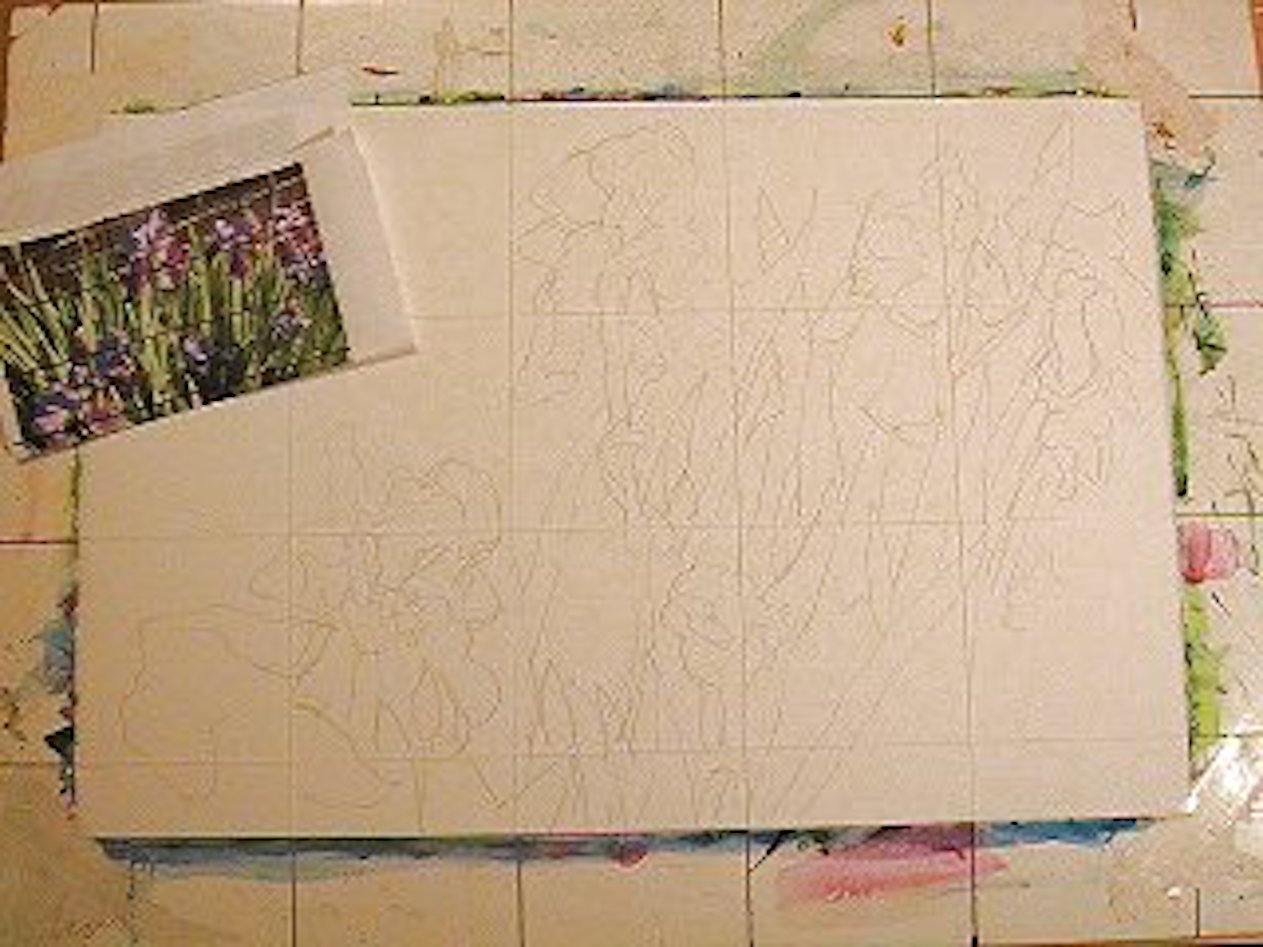 After developing your composition into a working sketch, or selecting a photo for reference, begin by drawing a grid on the reference art. You can draw your grid on acetate and tape it to the reference art, or if you are using digital photos, import your photo into a page layout program, draw your gridlines on top of the photo, and print out a reference print. Tape your paper to your support with masking tape on each of the four corners. Using at least 140lb paper avoids most problems with warping as the paper expands and contracts from the moisture in your paints. Lightly pencil an enlarged version of your grid on your paper. If you're confident in your sketching skills, you can skip the whole grid step and just sketch straight onto your paper.
After developing your composition into a working sketch, or selecting a photo for reference, begin by drawing a grid on the reference art. You can draw your grid on acetate and tape it to the reference art, or if you are using digital photos, import your photo into a page layout program, draw your gridlines on top of the photo, and print out a reference print. Tape your paper to your support with masking tape on each of the four corners. Using at least 140lb paper avoids most problems with warping as the paper expands and contracts from the moisture in your paints. Lightly pencil an enlarged version of your grid on your paper. If you're confident in your sketching skills, you can skip the whole grid step and just sketch straight onto your paper.
Step 2: Drawing on Your Watercolor Paper
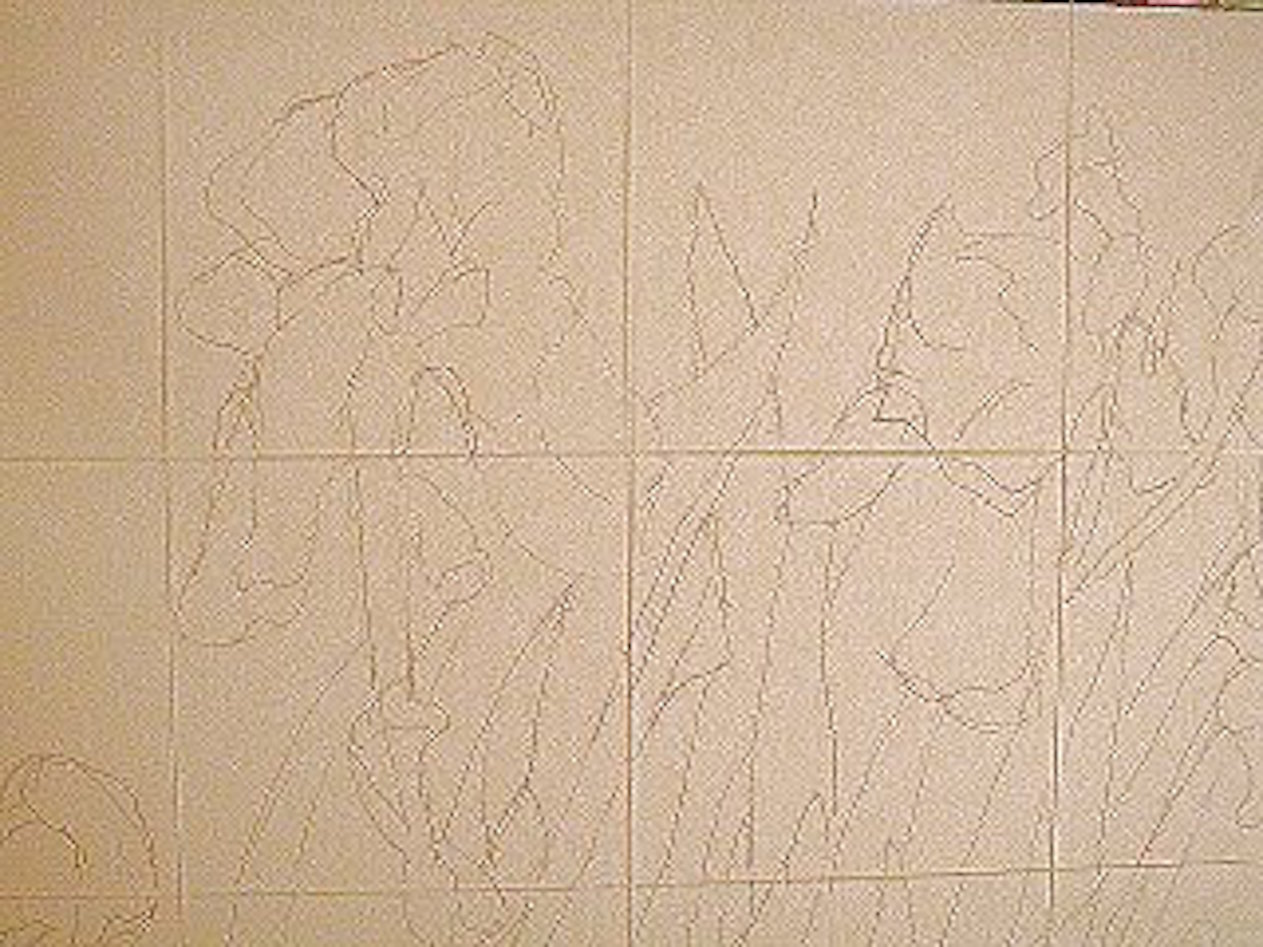 Following each square of your reference art, lightly draw the key elements in each square. Continue with each square until entire drawing is completely sketched. Use your kneaded eraser to remove grid lines after you complete your drawing.
Following each square of your reference art, lightly draw the key elements in each square. Continue with each square until entire drawing is completely sketched. Use your kneaded eraser to remove grid lines after you complete your drawing.
Step 3: Start Painting!
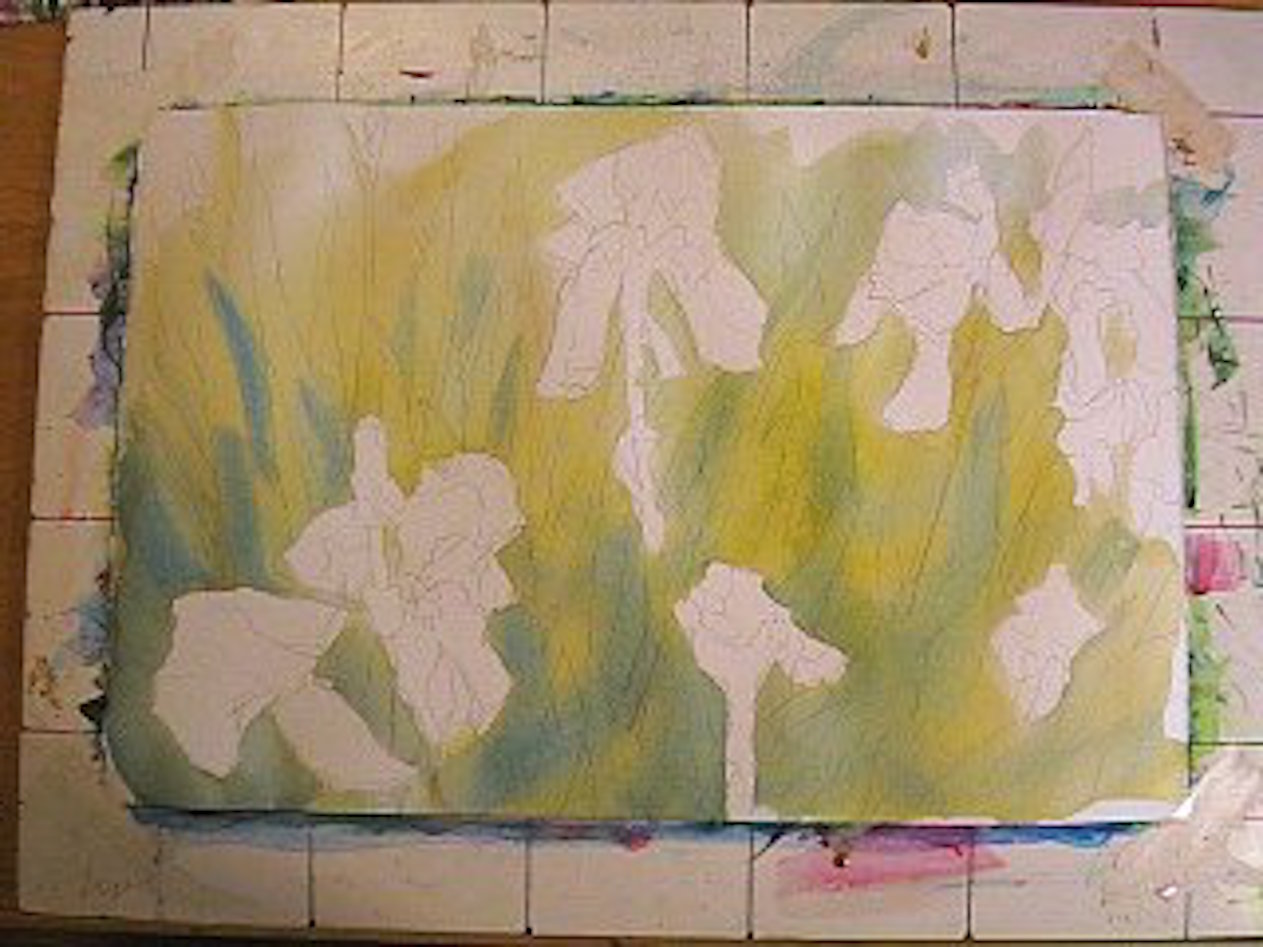 I started by using my 1" flat to brush clear water over the entire paper, being sure to paint around the basic flower shapes. Into the wet paper, I worked a mixture of Cadmium Yellow Light and Sap Green. While the first wash was still wet, I flowed in darker tones mixed with Hooker's Green Dark and Cobalt Blue, using my #10 brush.
I started by using my 1" flat to brush clear water over the entire paper, being sure to paint around the basic flower shapes. Into the wet paper, I worked a mixture of Cadmium Yellow Light and Sap Green. While the first wash was still wet, I flowed in darker tones mixed with Hooker's Green Dark and Cobalt Blue, using my #10 brush.
Step 4: Undercolor and Accenting
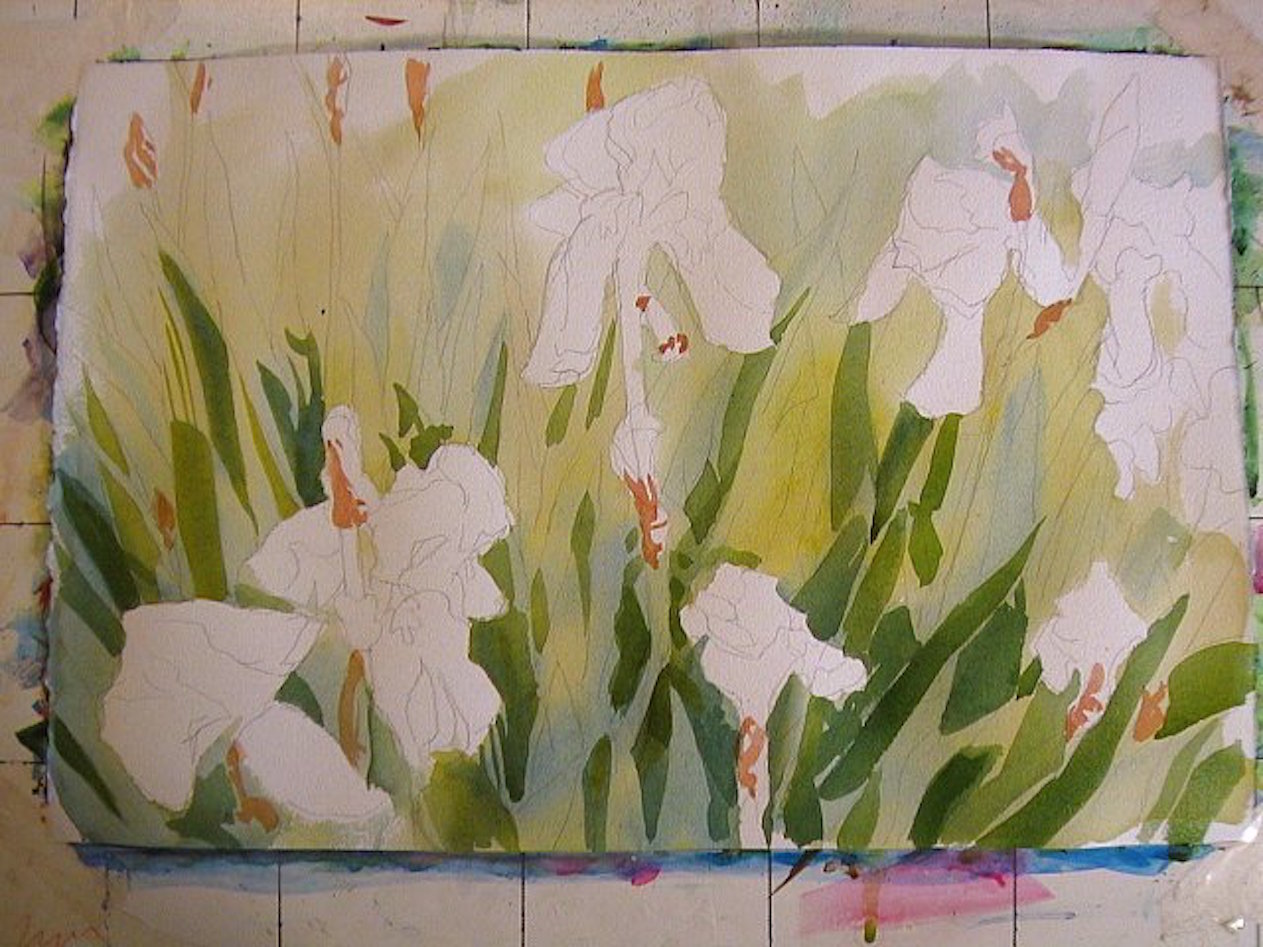 After the background wash was dry (I used a hair dryer to dry the paper), I used small washes of Raw Sienna to indicate the browning portions of the irises. I then began adding some darks to the foliage with a mixture of Hooker's Green Dark and Cobalt Blue.
After the background wash was dry (I used a hair dryer to dry the paper), I used small washes of Raw Sienna to indicate the browning portions of the irises. I then began adding some darks to the foliage with a mixture of Hooker's Green Dark and Cobalt Blue.
Step 5: Raw Color
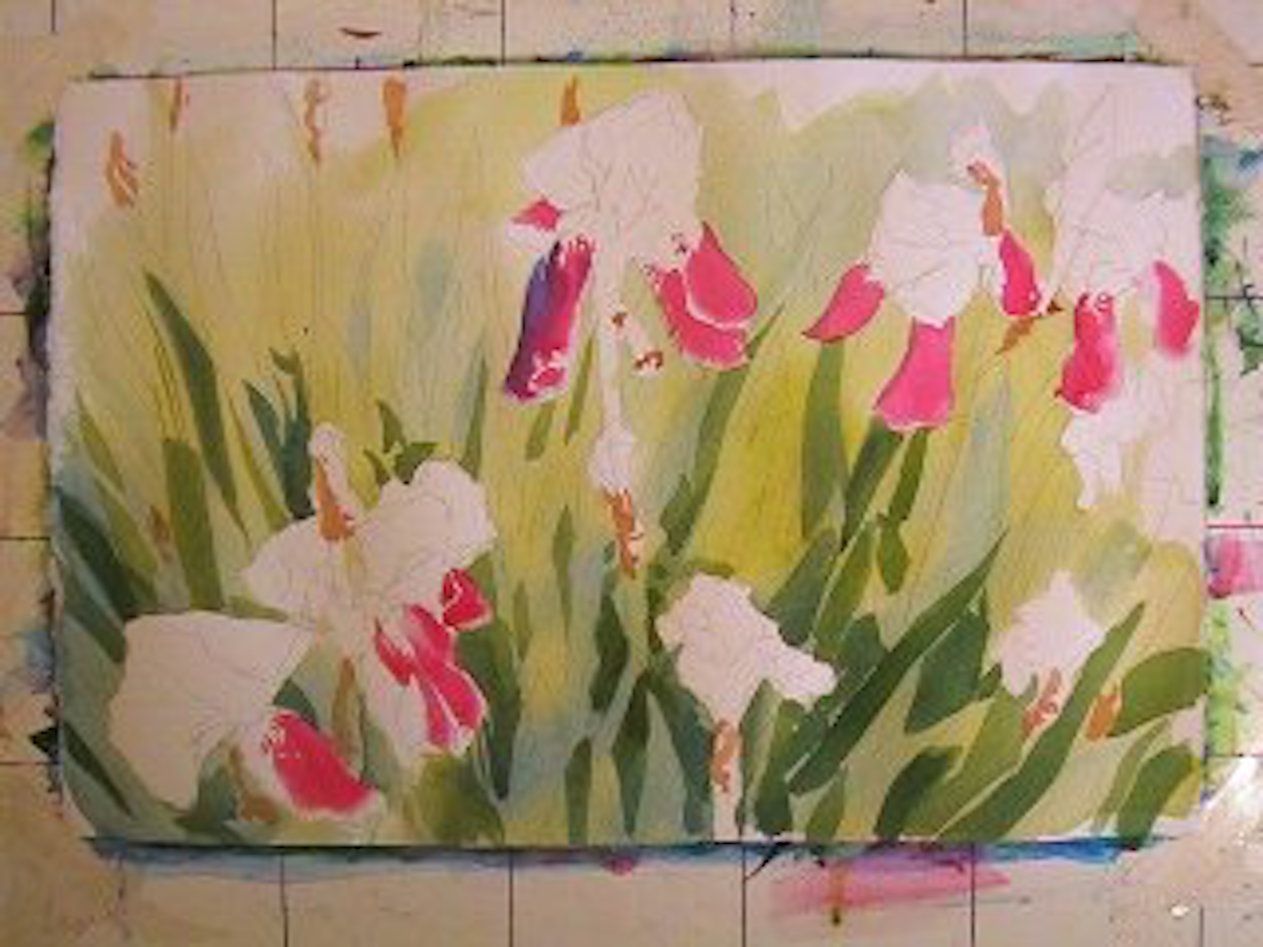 Because the irises were so intense in color, I decided to underpaint some of the petals in pure Permanent Rose. Be sure to use clear water and soften any edges that are supposed to be soft before your wash dries. On the upper portions of the flowers, I flooded the area with clear water and used a wet-in-wet technique of Permanent Rose to create the soft blushes of color in the white areas of the flowers.
Because the irises were so intense in color, I decided to underpaint some of the petals in pure Permanent Rose. Be sure to use clear water and soften any edges that are supposed to be soft before your wash dries. On the upper portions of the flowers, I flooded the area with clear water and used a wet-in-wet technique of Permanent Rose to create the soft blushes of color in the white areas of the flowers.
Step 6: Muted in Shadow
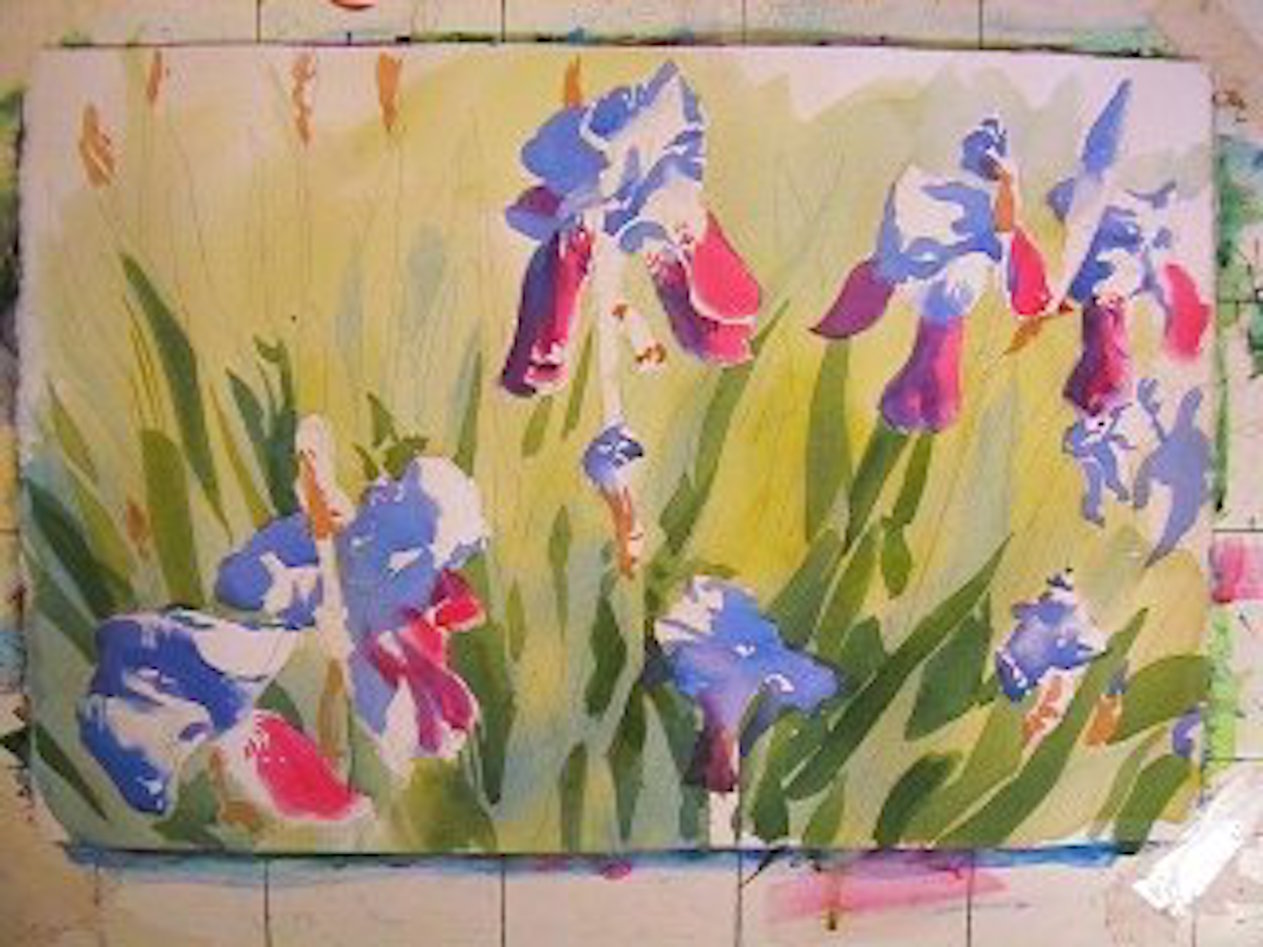 Using Cobalt Blue with a touch of Dioxazine Purple, I painted the basic shadows of each flower. I paid close attention to the original photo to get the correct shapes and combination of soft and hard edges. I then used Dioxazine Purple to start adding the shadows on the red petals.
Using Cobalt Blue with a touch of Dioxazine Purple, I painted the basic shadows of each flower. I paid close attention to the original photo to get the correct shapes and combination of soft and hard edges. I then used Dioxazine Purple to start adding the shadows on the red petals.
Step 7: Altering Reality
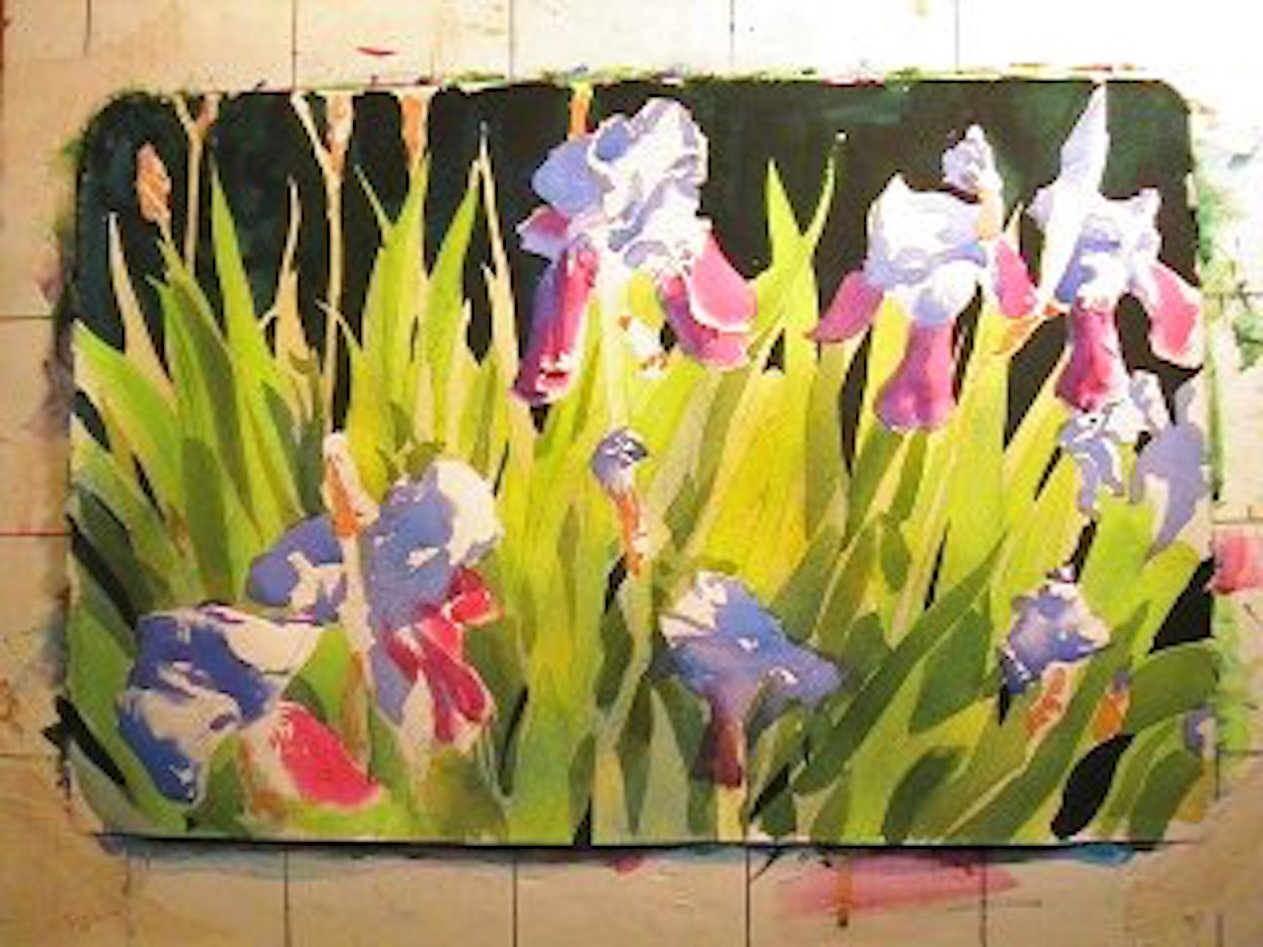 My original photo had a background of a sunlit brick wall. I decided the bricks would make the painting too busy and opted to use a dark mixture of Phthalocyanine Blue and Burnt Umber to indicate a deep shadow area behind the entire group of flowers and foliage. I varied the mixture as I painted the background for a more interesting design. These two colors can give you deep dark blues, rich greens, and warm dark browns as you mix them in different quantities.
My original photo had a background of a sunlit brick wall. I decided the bricks would make the painting too busy and opted to use a dark mixture of Phthalocyanine Blue and Burnt Umber to indicate a deep shadow area behind the entire group of flowers and foliage. I varied the mixture as I painted the background for a more interesting design. These two colors can give you deep dark blues, rich greens, and warm dark browns as you mix them in different quantities.
Step 8: Chasing the Light
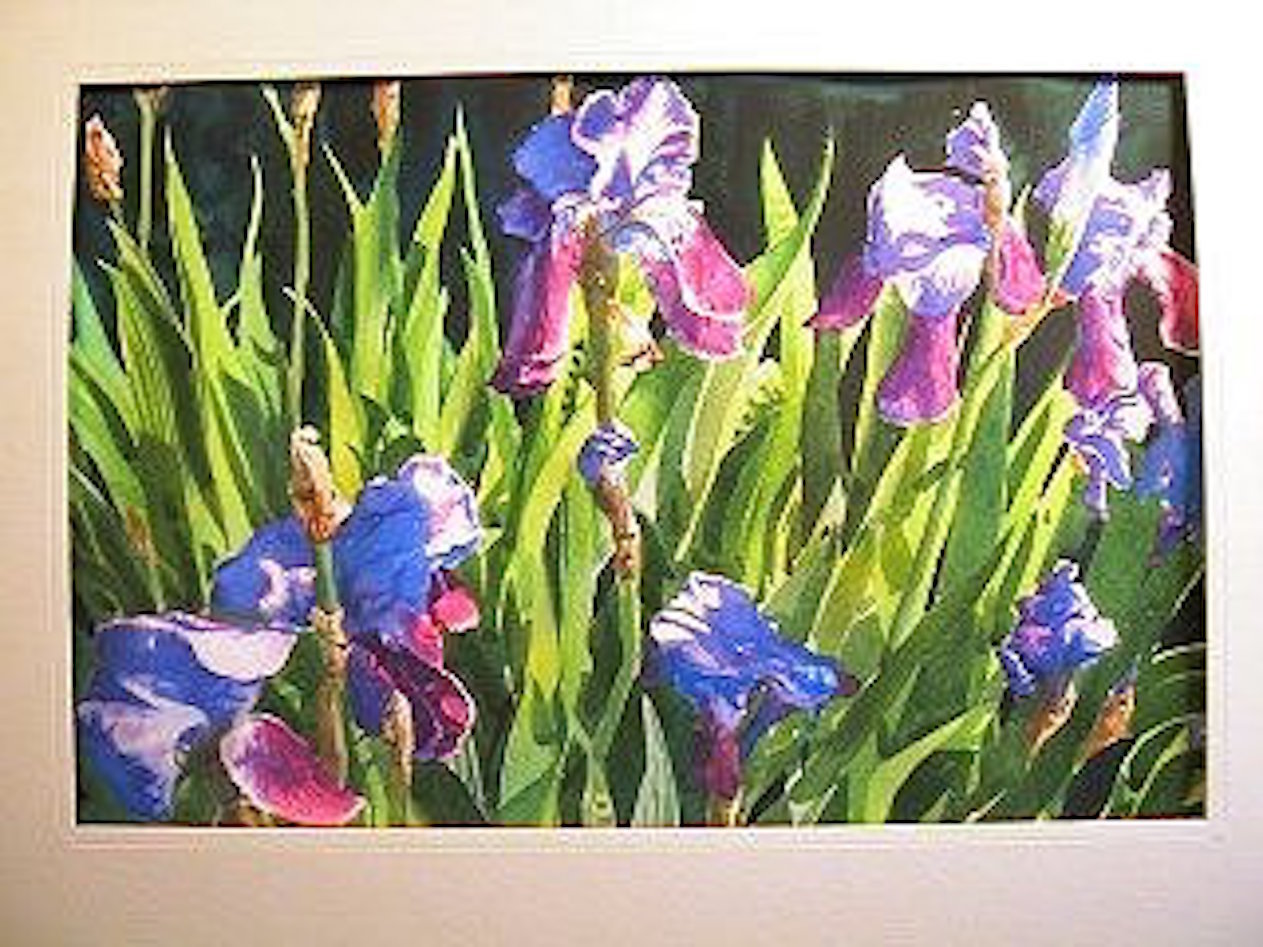 I started to work intensely on the patterns of light and dark within the foliage. Using various mixtures of Cadmium Yellow Light, Sap Green, Hookers Green Dark, Pthalocyanine Green and Cobalt Blue, I modeled the leaves until I achieved the effect of sunlight traveling through them. It casts some in shadow, backlights some, and makes cast shadows across other leaves. All the while, I was paying close attention to the photo so I could get enough of the detail to make it believable. I also worked on the stalks of the flowers with Sap Green, Raw Sienna, and Burnt Umber.
I started to work intensely on the patterns of light and dark within the foliage. Using various mixtures of Cadmium Yellow Light, Sap Green, Hookers Green Dark, Pthalocyanine Green and Cobalt Blue, I modeled the leaves until I achieved the effect of sunlight traveling through them. It casts some in shadow, backlights some, and makes cast shadows across other leaves. All the while, I was paying close attention to the photo so I could get enough of the detail to make it believable. I also worked on the stalks of the flowers with Sap Green, Raw Sienna, and Burnt Umber.
Step 9: Making it Real
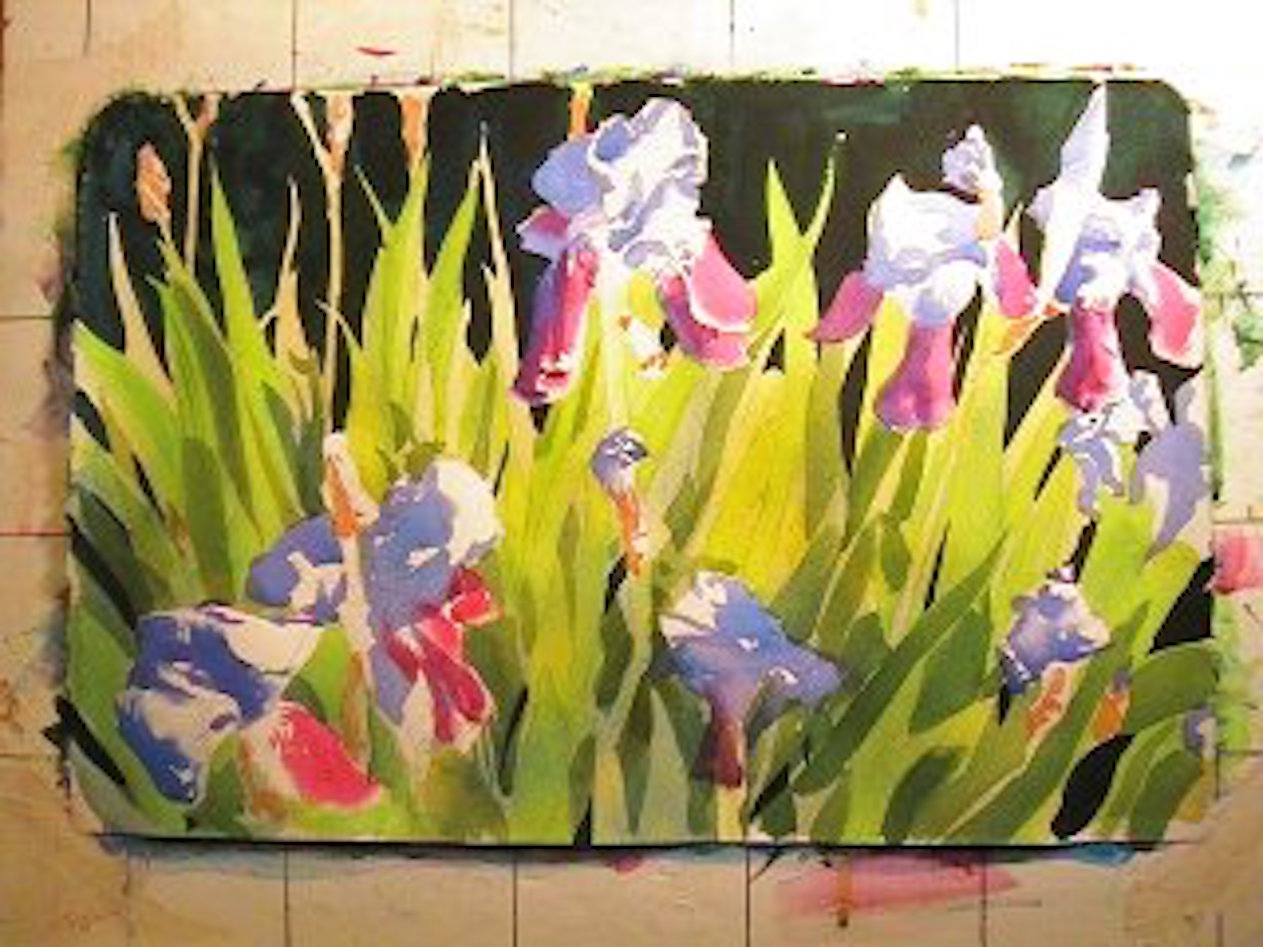 Final modelling on each flower was done with Dioxazine Purple, Permanent Rose, and Cobalt Blue. I used the point of my #6 brush to add veining and texture to each flower.
Final modelling on each flower was done with Dioxazine Purple, Permanent Rose, and Cobalt Blue. I used the point of my #6 brush to add veining and texture to each flower.
Step 10: Take a Step Back
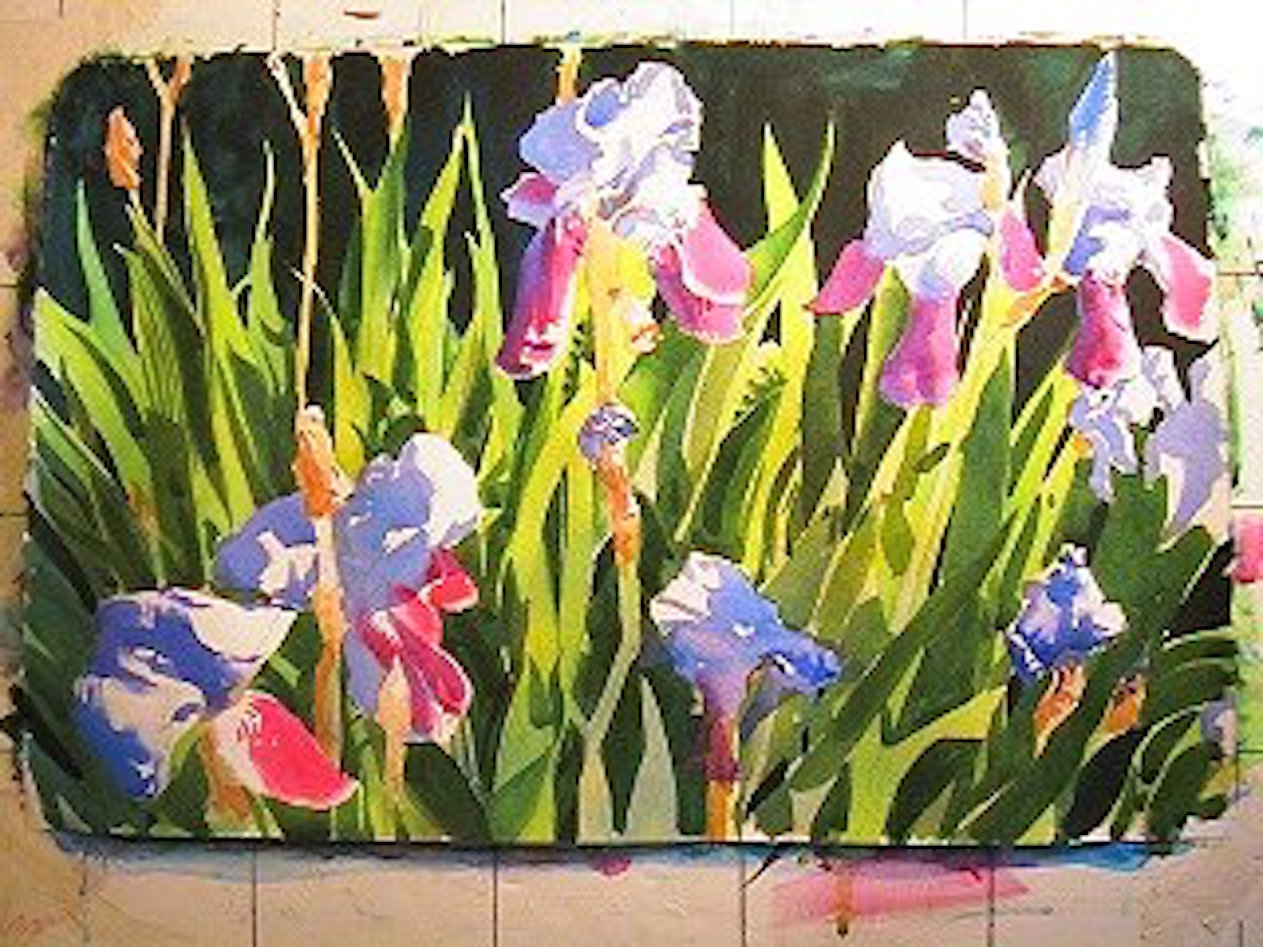 After letting the painting set for a day, I brought it out again and looked at it with a loose mat and fresh eyes. I saw a few areas that needed tweaking. After making some minor adjustments in contrast and shape, the painting was declared finished.
After letting the painting set for a day, I brought it out again and looked at it with a loose mat and fresh eyes. I saw a few areas that needed tweaking. After making some minor adjustments in contrast and shape, the painting was declared finished.
